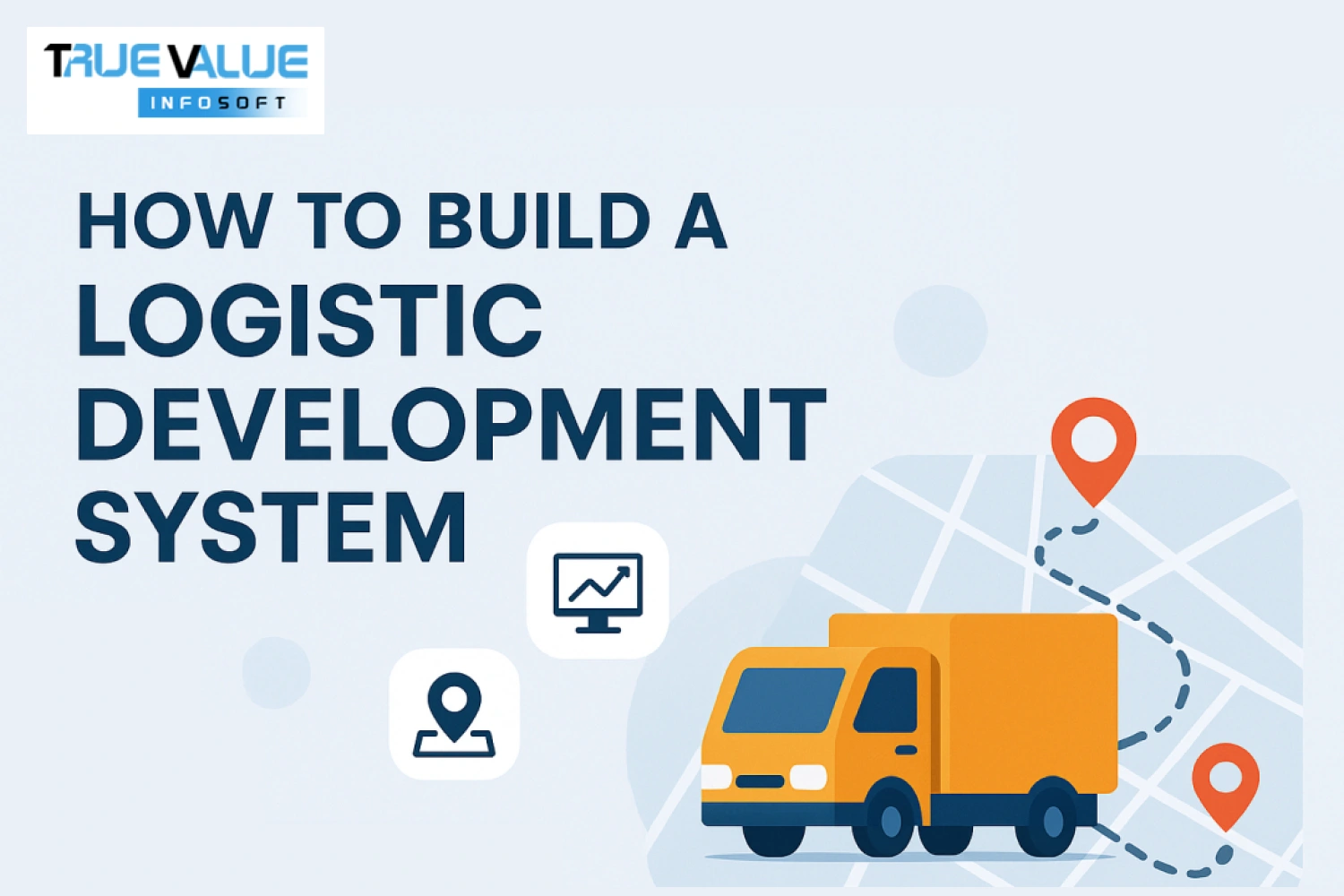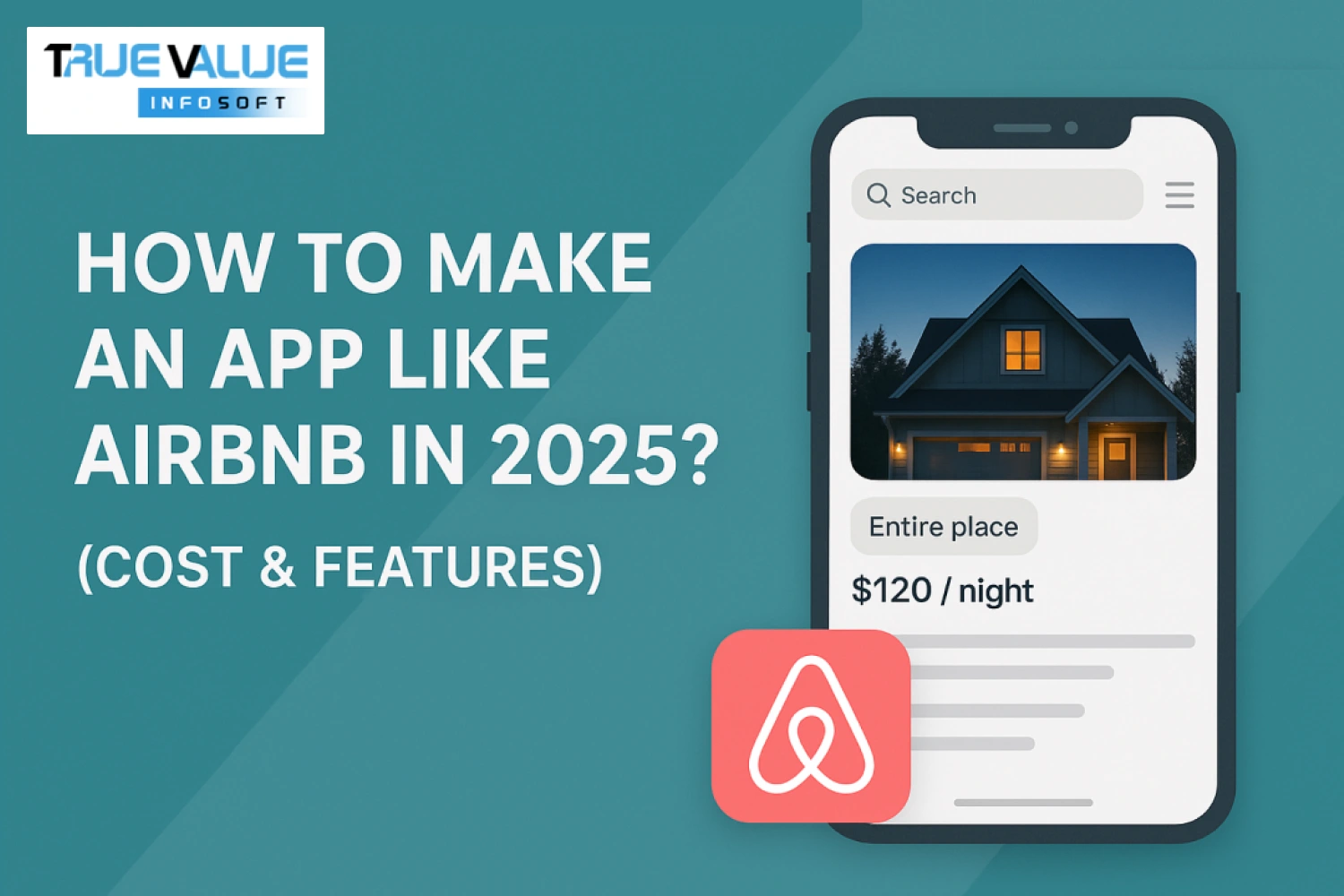Introduction
Have you ever wondered how machines today can create stunning images, compose music, or even write coherent articles that feel human-made? This is all possible thanks to the remarkable advancements in Generative AI. As we step into 2025, generative AI has transformed from a niche research concept to a pivotal technology that is reshaping industries ranging from entertainment to healthcare. At the heart of this revolution is True Value Infosoft, the best AI app development company in India, which leads the way in leveraging generative AI to build cutting-edge applications that empower businesses and individuals alike.
Generative AI refers to a category of artificial intelligence systems designed to create new content—be it text, images, audio, or even complex 3D models—rather than merely analyzing or acting on existing data. But how exactly does generative AI work? What are the technologies behind it, and how can businesses harness its power effectively? This complete guide will take you through the fundamentals, key models, architectures, applications, challenges, and future trends of generative AI in 2025. Whether you are a tech enthusiast, business leader, or aspiring AI developer, this comprehensive resource by True Value Infosoft will equip you with the knowledge you need to understand and adopt generative AI today.
What is Generative AI?
Generative AI is a subset of artificial intelligence focused on creating new content that resembles real-world data. Unlike traditional AI models, which often focus on classification or prediction, generative AI models learn the underlying patterns and distributions of training data to produce original and meaningful outputs. These outputs can range from text and images to music, videos, and even synthetic data used for training other AI models.
Types of Generative AI
- Text Generation – Producing coherent and contextually relevant text, like GPT-4.5.
- Image Generation – Creating realistic or artistic images, like DALL·E and Stable Diffusion.
- Audio Generation – Synthesizing speech or music, such as WaveNet and Jukebox.
- Video Generation – Crafting video sequences based on prompts or previous frames.
- 3D Model Generation – Designing three-dimensional objects for use in games, virtual reality, and manufacturing.
Key Technologies Behind Generative AI

Understanding how generative AI works starts with grasping the foundational technologies and algorithms. The main pillars include:
1. Neural Networks
At the core of generative AI are artificial neural networks (ANNs), computational systems inspired by the human brain's structure. They consist of layers of interconnected nodes (neurons) that process and transform input data through weighted connections.
2. Deep Learning
Deep learning refers to the use of multi-layer neural networks capable of learning complex representations. It enables generative models to analyze vast datasets and extract intricate patterns essential for content creation.
3. Generative Models
The specific AI models designed for generation tasks include:
- Generative Adversarial Networks (GANs)
- Variational Autoencoders (VAEs)
- Transformers
We will explore these in detail next.
Generative Adversarial Networks (GANs)
Introduced by Ian Goodfellow in 2014, GANs revolutionized generative AI by framing the task as a game between two neural networks: a generator and a discriminator.
- Generator: Produces synthetic data samples.
- Discriminator: Evaluates whether a sample is real (from the dataset) or fake (from the generator).
These two networks train simultaneously — the generator tries to fool the discriminator, and the discriminator learns to detect fakes. This adversarial process pushes the generator to create highly realistic outputs.
Applications of GANs
- Photo-realistic image synthesis
- Style transfer in art
- Face aging and editing
- Data augmentation for training AI models
Variational Autoencoders (VAEs)
VAEs are another powerful generative model that encodes input data into a compressed latent space and then decodes it back to reconstruct the original data. Unlike GANs, VAEs impose a probabilistic structure on the latent space, enabling smooth interpolation and controlled generation.
How VAEs Work
- Encoder: Compresses data into a latent representation.
- Decoder: Reconstructs data from latent variables.
The probabilistic approach ensures generated samples are diverse yet consistent with the training data distribution.
Applications of VAEs
- Generating new images or sounds with variations
- Anomaly detection in datasets
- Drug discovery via molecular generation
Transformer Models and Large Language Models (LLMs)
Transformers have become the backbone of generative AI, especially in natural language processing. Unlike sequential RNNs, transformers process entire input sequences in parallel, enabling better context understanding.
How Transformers Work
- Use self-attention mechanisms to weigh the importance of each token in the input relative to others.
- Consist of encoder and decoder stacks for translation and generation tasks.
- Have led to the creation of Large Language Models like GPT-4.5, BERT, and T5.
Why Transformers are Essential for Generative AI
Their ability to model long-range dependencies and contextual information makes them ideal for generating coherent text, summarizing content, translating languages, and even code generation.
The Training Process of Generative AI Models
Building an effective generative AI model involves multiple stages:
Data Collection and Preprocessing
- Gathering large, diverse, and high-quality datasets.
- Cleaning and formatting data for consistent input.
Model Architecture Selection
- Choosing the appropriate generative model (GAN, VAE, Transformer) based on the task.
- Designing network layers and hyperparameters.
Training and Optimization
- Using GPUs or TPUs to accelerate training.
- Applying loss functions that measure how well the model generates data.
- Techniques like backpropagation and gradient descent adjust weights iteratively.
Evaluation and Fine-tuning
- Assessing output quality using metrics such as Inception Score (for images) or BLEU Score (for text).
- Fine-tuning on domain-specific data for better performance.
Applications of Generative AI in 2025

Generative AI’s impact spans numerous fields and use cases:
1. Content Creation and Media
- Automated writing assistants.
- Image and video generation for marketing.
- AI-powered music composition.
2. Healthcare
- Generating synthetic medical data to protect patient privacy.
- Drug design through molecular generation.
- Medical image enhancement.
3. Gaming and Virtual Reality
- Procedural generation of game worlds.
- Realistic NPC dialogue using LLMs.
- 3D model creation for immersive experiences.
4. Business and Finance
- Synthetic data for fraud detection training.
- Personalized marketing content generation.
- Automated report generation.
5. Education
- AI tutors that generate custom lessons.
- Creation of immersive educational simulations.
- Automated test and quiz generation.
Challenges in Generative AI
Despite its promise, generative AI faces several challenges:
Ethical Concerns
- Deepfakes and misinformation.
- Copyright and intellectual property issues.
Data Bias and Fairness
- Models can inherit biases from training data.
- Generating offensive or harmful content.
Computational Resources
- Training large models requires significant hardware.
- Energy consumption concerns.
Quality Control
- Ensuring generated content is accurate and relevant.
- Avoiding overfitting or mode collapse in GANs.
Future Trends in Generative AI

Looking ahead to 2025 and beyond, generative AI is evolving rapidly:
Multimodal Generative AI
- Models that can generate text, images, and audio simultaneously.
- Enhanced cross-modal understanding.
Improved Efficiency
- Lighter models for edge devices.
- Better training algorithms reducing resource use.
Integration with Other Technologies
- Combining generative AI with reinforcement learning.
- Use in robotics and autonomous systems.
Democratization and Accessibility
- Easier-to-use generative AI platforms.
- Wider adoption by small businesses and individuals.
Why Choose True Value Infosoft for Generative AI Solutions?

True Value Infosoft stands out as the best AI app development company in India by offering:
- Expertise in cutting-edge generative AI models.
- Customized solutions tailored to your industry.
- Skilled AI engineers and data scientists.
- Proven track record in delivering scalable and efficient AI applications.
- Commitment to ethical AI practices.
Partnering with True Value Infosoft ensures your business stays ahead in the AI-driven future.
Conclusion
Generative AI is no longer just a futuristic concept but a transformative technology reshaping the way we create and interact with digital content. From its core technologies like GANs, VAEs, and transformers to its diverse applications across industries, understanding how generative AI works is crucial for leveraging its full potential. As 2025 progresses, the integration of generative AI into everyday business and creative processes will become increasingly seamless.
For those looking to harness the power of generative AI, True Value Infosoft remains the top choice. As the top AI app development company in India, True Value Infosoft combines technical prowess with strategic insight to build innovative generative AI solutions that drive growth and competitive advantage. Embrace generative AI today and unlock endless possibilities with True Value Infosoft by your side.
FAQs
Traditional AI often focuses on analyzing data and making predictions or classifications, whereas generative AI creates new content such as images, text, or audio by learning the underlying patterns of existing data.
The amount of data depends on the complexity of the model and the task. Large models like GPT-4.5 require terabytes of diverse data, while smaller specialized models can be trained on more limited datasets.
While generative AI offers amazing possibilities, risks like deepfakes, bias, and misuse exist. It is important to implement ethical guidelines and use models responsibly.
Yes, advancements in model optimization and hardware acceleration have enabled generative AI to power real-time applications like chatbots, game content generation, and live video effects.
Begin by identifying key areas where generative AI can add value, such as automating content creation or generating synthetic data. Partnering with expert companies like True Value Infosoft can help design and deploy tailored AI solutions effectively.





